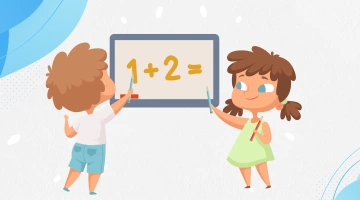Types of Assessment that Allow to Determine the Level of Students’ Knowledge
Updated on January 1, 2024
Assessment is a routine evaluation of students’ understanding of concepts and their needs for achieving success in studying. Assessment is critical in teaching because it amplifies students’ strengths and weaknesses. This article will show you how effective assessment methods help students reach the highest academic standards.
What Is the Purpose of Assessment?
Teachers can promote a healthy, non-competitive learning environment for students by regularly assessing them since assessment helps track children’s progress and test your teaching methods. Evaluation of students’ level of knowledge and intellectual capacity allows you to create tailored tests for every individual child. Students learn differently and at different paces, so teachers need to understand how much their students know.
Assessments also help teachers gather essential data for improvement of their own teaching methods. Students aren’t the only focus in the classroom because their achievements are offshoots of their teachers’ abilities. So, when assessing children, you can monitor your progress and maintain your current teaching approach or tweak it.
For this reason, teachers typically have students participate in simulations of classroom instruction where specific components remain real, but others are momentarily removed from consideration. Gauging students’ progress using different types of assessment strategies is a vital part of the studying process which can give students a chance for improvement.
1:1 Math Lessons
Want to raise a genius? Start
learning Math with Brighterly
 Let’s start learning Math!
Let’s start learning Math!
What Are the Types of Assessment?
Understanding different types of assessment is the first step to a formative evaluation. When reviewing kids’ performance in school, focus on more specific aspects of a topic. For example, if you have to evaluate fractions, you can focus on students’ ability to identify functions of the denominator. This process is more effective than focusing on a general topic.
Evaluation of students’ knowledge, comprehension, and ability levels is the fundamental goal of assessment. Students and instructors can benefit from assessments since the latter serve as a vital element of teaching and learning. Consequently, tutors need to be adept at performing correct evaluations.
So, what are the types of assessments for teachers interested in taking their teaching strategies to the next level?

Diagnostic Assessments (Pre-assessment)
A diagnostic assessment serves as a pre-examination test to gauge children’s knowledge because the evaluation’s conclusion aids teachers in restructuring lessons. This approach is practical when introducing a new topic to the class. It helps you test pupils’ readiness to perceive information and assists in deciding how to teach the subject.
The pre-test results will define how much time a teacher needs to devote to every subject. Using assessment results, teachers may design their lessons more effectively, set reasonable learning goals, and highlight areas that may require more or less attention. For instance, in teaching the concept of addition to first graders, a diagnostic assessment may reveal that many pupils are already familiar with simple addition like adding two balls or pencils and possess other basic counting and addition knowledge. As a result, a teacher could decide to devote more time to teaching kids any subject from where they left off instead of starting from the basics.
Fact fluency exams, inquiry-based questions, and surveys for children and their families are methods employed in carrying out a diagnostic assessment. Teachers may use the results of diagnostic evaluations to plan more effective lessons. Diagnostic tests can also serve as a way for teachers to offer more personalized learning experiences for students. For example, some learners may learn at a steady pace, or a teacher may cover every concept necessary to complete the term’s curriculum.
Summative Assessments
Teachers use a summative assessment approach to officially score the progress of a student’s learning journey at the end of a school session. Summative and formative assessments may work well together, and teachers can choose from the two or incorporate both techniques into their teaching.
A summative assessment can help students examine the course’s material in its entirety. Some types of summative assessment are a midterm paper, senior recital, research paper, etc.
The educational system heavily relies on standards-driven teaching. A summative assessment is a baseline for assessing the success of students, institutions, and educational programs in general. This assessment is a significant contributor to improving a school’s curriculum. It is possible to modify a curriculum design or adopt new learning criteria when summative assessment data shows a wide disparity between students’ knowledge and educational goals.

Ipsative Assessments
An ipsative assessment is a survey or evaluation in which the participant is compelled to choose from a list of socially acceptable possibilities. It is also known as a forced-choice scale, and it gets its name from the Latin word ipse, which means “of oneself.” This type of assessment allows students to observe how well they progress in their learning. It also helps students identify if they pay proper attention to feedback.
An ipsative assessment is helpful since all students may benefit from the exercise. For instance, under ipsative assessment, a student who has issues with getting high scores may be inspired to do better in their test. In the same vein, a top performer will want to do better to beat their previous records. This type of assessment may reduce bad results that dampen a child’s zest to learn and encourage the stronger performer.
An example of ipsative assessment is a process when students compare the past result of a test to the current one. So, the evaluation is based on students’ previous performance, resulting in a ‘personal best.’ On a purely quantitative basis, ipsative evaluation simply compares different test results of the same students, and teachers often refer to the approach as profiling or reflections.
Norm-referenced Assessments
Norm-referenced assessments measure students’ achievement by comparing their results to the ones of their peers. Under this kind of assessment, tests are graded by comparing a person’s performance to other students’ level in the same demographic.
Teachers use a norm-referenced exam to rank and compare pupils, and the approach is sometimes referred to as a standardized test. Using examinations, teachers ascertain if a student does better than the national average. It is done by comparing a student’s score to a group of fellow students, usually in the same grade and level. The most common way to judge and present the results is in percentile rankings.
Norm-referenced testing is typically used to measure intelligence. Examples of norm-referenced types of assessment in education include SAT, IQ exams, etc. Most of these tests consist of multiple-choice questions. However, some may have short essay questions.

Criterion-referenced Assessments
Criterion-referenced assessment is an evaluation based on standards that are referenced or tied to specific criteria. Norm-referenced exams have their flaws, so it is difficult to determine anything other than the performance of an individual against others.
Under criterion-referenced assessment, no comparisons are made. The approach simply shows whether or not a student meets the needed requirements. So, teachers evaluate and grade students’ learning against pre-specified criteria without reference to others’ achievements.
Teachers use standards or performance descriptors to indicate how effectively children achieve progress. Students must show that they have met learning objectives by meeting the pre-specified criteria during an evaluation.
Synoptic Assessment
A synoptic assessment is an evaluation that incorporates two or more study units into one.
This way, students can synthesize and apply what they have learned so far. This technique makes it possible to provide students with more opportunities to improve their ability to make meaningful connections between all the learned concepts. It may also encourage students’ engagement and provide teachers with a more holistic, conceptual approach to teaching kids.
Synoptic assessment emphasizes the process of learning rather than the final product as being more critical. The assessment method gives students a deeper understanding of the subjects, which leads to more significant improvement.
After completing the basic modules, students will take a computer-based examination. The synoptic type of assessment is the AAT exam where students demonstrate their knowledge of necessary finance skills from basic accounting to complex management concepts. The test allows students to showcase their abilities and talents and reflects their depth of understanding of the topic.
1:1 Math Lessons
Want to raise a genius? Start
learning Math with Brighterly
 Let’s start learning Math!
Let’s start learning Math!
Work-Integrated Assessment
The work-Integrated assessment is a framework for creating assessments that are closely linked to the situations and activities an individual might encounter in real-life scenarios. The assessment focuses on six areas of evaluation. They are review, problem/data, time, structure, audience, and collaboration.
Teachers may use work-integrated assessment to give kids a better shot at understanding the concepts learned for a stipulated period. Furthermore, this type of evaluation encourages kids to reflect on their recent learning, in particular how well they know the courses and what they have learned in the module. Teachers may use these factors to get an overall sense of how a planned method has been functioning in reality.
As a thinking tool, integrated work assessment encourages teachers to consider how to use various modules to evaluate students properly. A work-integrated assessment can also be called a situational assessment since the duties and circumstances closely relate to what the students learn. Capstone assignments are excellent examples of the work-integrated assessment method.
Formative Assessment
Formative assessment is a learning evaluation exercise that uses rapid feedback to help students learn. This assessment may help teachers observe the amount of information kids have retained and then alter future courses or activities to fill in gaps or speed things up. Teachers use formative assessments to adjust their lesson plans and provide quick findings that allow immediate instructional improvements.
These evaluations may occur in various forms, and the types of formative assessment may include benchmark examinations, homework, or class discussions the instructor does to track a child’s progress. Alternatively, a formative assessment is also referred to as an interim assessment since you can use the approach at various points during a unit, subject, or year to determine how knowledgeable the class is on the subject.
Formative evaluations are somewhat related to diagnostic assessment. While diagnostic assessments analyze what pupils have already learned from previous grades and teachers, formative assessments are used throughout a unit to see how pupils understand the courses and concepts the instructor has been teaching them. During a learning process, teachers use formative assessments to evaluate whether pupils are progressing at the appropriate pace or if there is a need for more lessons.

Authentic Assessment
Use the authentic assessment if you want to allow students to demonstrate their skills and competencies in a natural setting. Think of this method as a role play where students perform specific skills or express their knowledge in simulated real-world scenarios.
You may evaluate any module using the authentic assessment as a stand-alone technique. This physical approach promotes deep introspection and the capacity to recognize and describe newly acquired knowledge. It reviews students’ problem-solving skills and ability to think on the fly.
Authentic assessments influence teaching curricula. Teachers first choose exercises for students to exhibit their mastery of the courses and then develop a curriculum that lets them perform those tasks. The approach is in stark contrast to standardized tests like multiple-choice exams.
Many educators have termed the approach planning backward. Case studies are a typical example of authentic assessments. They aid in the intellectual and personal growth of students. Additionally, this type of assessment supports teachers in designing tests that are appropriate for their students’ educational skills.
Selective Response Assessment
The selective response is an objective approach that involves multiple-choice, matching, and true-or-false question types. Of the different types of assessment, this method is the most common for reviewing students’ performance in the current educational system. For example, many teachers use this evaluation for 2nd-grade students learning shapes. The results inform a teacher of the students’ understanding of shapes and help identify when it is time to progress to the next unit.
This evaluation type also benefits students. They notice the aspects of the lessons they understand well and those that need improvement. For instance, students can recognize that flipped and rotated shapes are still the same as the original ones. Orientation does not change a form, and a rectangle turned 45 degrees on its side is still a rectangle. With the selective response type of learning, kids can have options and choose which one best fits the question.
Conclusion
The use of assessments in learning necessitates familiarity with the processes of helping kids understand educational concepts. Students learn differently, and any of the assessment methods above can help you know where the kids have issues with learning. Using the strategies in this article, you can choose the best types of assessment for learning.












